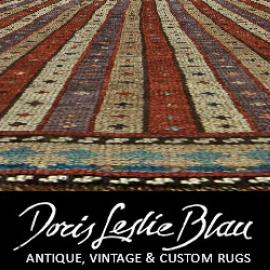Nathan Lombard
A New Form and an Uncovered Family Provenance
Old Sturbridge Village recently had the rare opportunity to purchase two important Nathan Lombard (1777–1847) furniture pieces: a drop-leaf table and a chest of drawers (Figs.1, 2). In recent years, Nathan Lombard has gained widespread acclaim for his intricately inlaid furniture, which is as delightful to the eye today as it would have been in the early 1800s, when these objects were produced. Yet, Lombard’s repertoire also included more utilitarian forms with simplified inlay meant to reach a more diverse clientele. Indeed, OSV’s pieces were part of everyday life for one New England family, who left their imprint on these pieces after generations of use.
This is an important acquisition and a locally pertinent one as well. Nathan Lombard was born in Brimfield in 1777, married in Sturbridge in 1802, and settled in Sutton in 1805. As such, his story is a local one tied directly to the towns surrounding OSV. (In addition, two of the known Lombard chests are signed by cabinetmaker Ebenezer Howard, indicating he may have been a journeyman or apprentice working with Lombard. Howard lived in the Oliver Wight house, one of the original three structures still on OSV’s campus.)
Our research has revealed that figures 1 and 2 not only have a history of ownership within a well-documented family, but that the original owners have a connection to Nathan Lombard. Asahel Stowell was the fourth generation of the Stowell family to reside in Massachusetts. He maintained an eighty-acre farm in Petersham, where he and his wife Persis Ward built a home of modest size in 1798. It is probable that as Asahel and Persis looked to furnish their new home, they turned to Nathan Lombard for the commission of these two pieces, which date to roughly 1805.
Nathan, like many of his contemporaries, relied on the commissions of family and acquaintances to support his trade. We know that Ezra Allen, second cousin of Nathan’s wife, commissioned a series of pieces for his family. In another instance, a Lombard card table belonged to Abijah Woodward, who married Nathan’s daughter, Julia Ann, and the piece may have been commissioned for their wedding.
Such might be the case for the creation of our chest and table since further research revealed that Nathan Lombard has direct ties to the Stowell family. He was a first cousin once removed to David Lombard (1757–1839), who married Beulah Stowell (1766–1838) in 1796. While Beulah and Asahel were not directly related, they were no doubt members of the larger Stowell family. Perhaps the chest and table were made as a result of this family connection; it is remarkable that they descended in the same household from that time.
Possibly the most distinguishable form of Lombard’s furniture is his chest of drawers. In this particular bow-front example, two of the four drawers retain their original locks and all brasses are original (Fig. 3). Many of the identifying characteristics of Lombard’s work are evident in this example, including: light and dark string inlay outlining each drawer and foot; an applied wood lip along the back top edge of the piece; a multi-board (two in this case) solid cherry top; an unusual foot profile (Fig. 4); and a bow-front shape made out of cherry veneer applied horizontally to a cherry and pine body.
The drop-leaf table is an exciting new form for Lombard—no other examples are known. This table has the characteristics of cherry wood and light and dark string inlay that we have come to expect in Lombard pieces. The drop-leaves are supported by the swing legs. The legs have a slight taper with a cuff inlay, over which two single strands of banded inlay begin and follow up the entire leg, terminating in an “m” shape just even with the skirt (Fig. 5). The m shape of the inlay design on the legs matches the decoration used on several other known Lombard pieces, including the desk-and-bookcase owned by Winterthur, where the m design is found on very sophisticated reverse-concave quarter columns with bell flowers of graduated sizes.
The two OSV pieces have typical wear patterns accumulated after generations of family use. One notable artifact is the remnants of sewing-bird marks on the underside of the drop-leaf table at each corner from where the clamps were attached (Fig. 6). These useful “third hands” would hold a bit of cloth, allowing a sewer the advantage of having both hands free to work. Such references to the use of these pieces by the Stowell family are important part of their family’s narrative.
Christie Jackson is curator of decorative arts at Old Sturbridge Village, Sturbridge, Massachusetts.

































